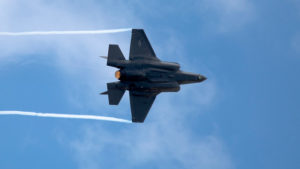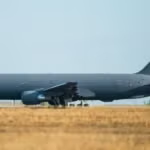
Appropriators provided the Defense Department with nearly two dozen extra F-35 Joint Strike Fighters in the fiscal year 2020 defense spending bill than were originally requested and filled multiple key Air Force procurement and research-and-development requests. The national security minibus includes funding for 98 F-35s – 20 more than were requested – for $9.3 billion, including 62 Air Force F-35A variants, 16 Marine Corps F-35B variants and 20 F-35C variants. Lawmakers note in the report accompanying the bill, which was…

 By
By 











